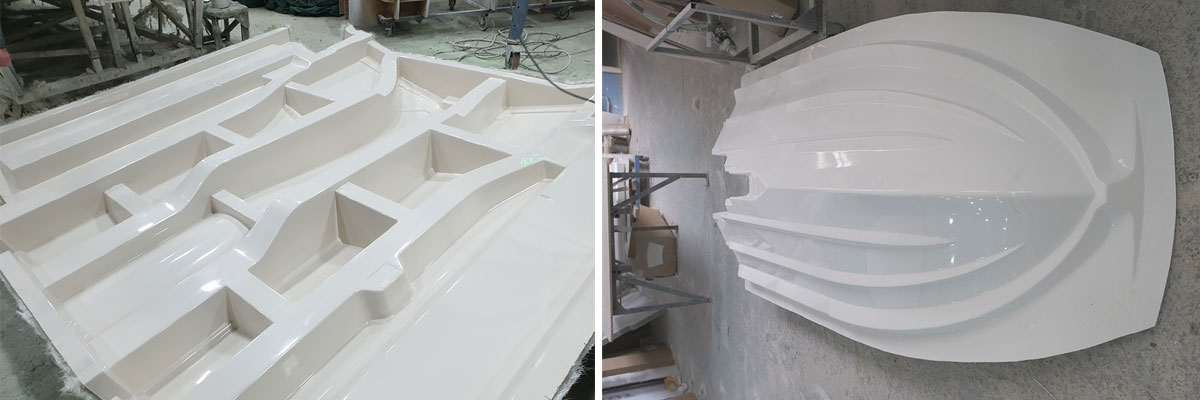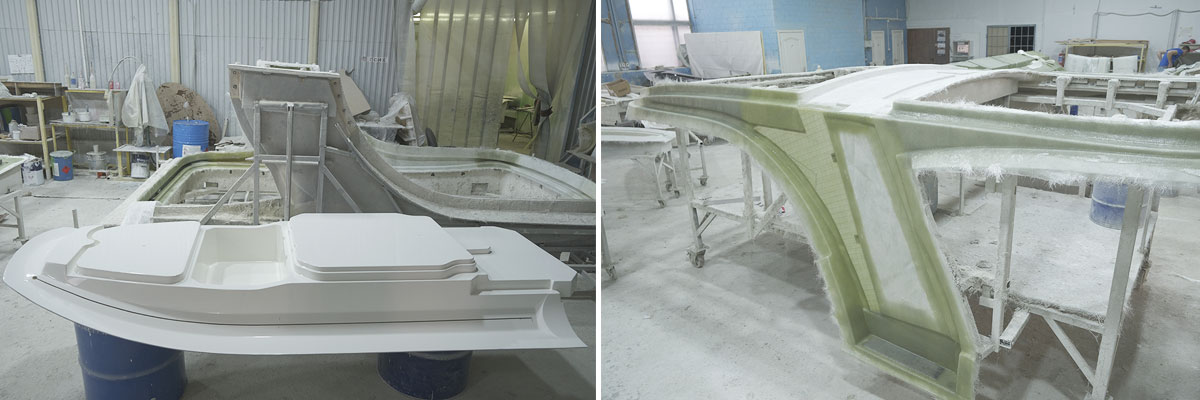Shipbuilding
The shipbuilding sector is one of the largest consumers of composite materials. Fiberglass is used as a structural material for the production of hulls for various types of vessels, including:
- rowing and motor boats;
- lifeboats;
- racing yachts and luxury cruising yachts;
- small fishing vessels;
- speedboats;
- scooters
- catamarans, and many other watercraft. It is also used to manufacture gangways, buoys, control panels, oars, tanks, and containers.
In addition to hulls, fiberglass is used to produce deck and cabin structures, wings, bridges, hatch and engine covers.
The introduction of this material has improved not only the operational characteristics of watercraft but also their aesthetic appearance.
The high performance qualities of fiberglass ensure reliability and quality, making modern vessels more durable and fire-safe.
Fiberglass used in shipbuilding possesses unique properties and offers several key advantages:
- Low thermal conductivity;
- High strength and durability, resistant to corrosion and rot in aquatic
environments; - Electrical insulation properties;
- A broad operating temperature range with resistance to solar radiation and ultraviolet light;
- If required, it can have fire-retardant or self-extinguishing properties;
- Ease of maintenance and repair.
Using fiberglass reduces the weight of vessels and increases their load capacity due to the material’s strength-to-weight ratio
To manufacture fiberglass for the shipbuilding industry, various polyester resins are used:
- Gelcoat, which offers enhanced resistance to ultraviolet light and moisture;
- Vinyl ester resin, such as AME 6000, used for marine applications;
- Polyester resin with low styrene content;
- Fiberglass mats and fabrics for reinforcement;
- ВHigh-strength PVC foam for boat construction.
Lightweight and strong fiberglass is ideal for designing and creating various watercraft structures, imparting them with its best qualities. You can see this for yourself by ordering the necessary components from our company.

